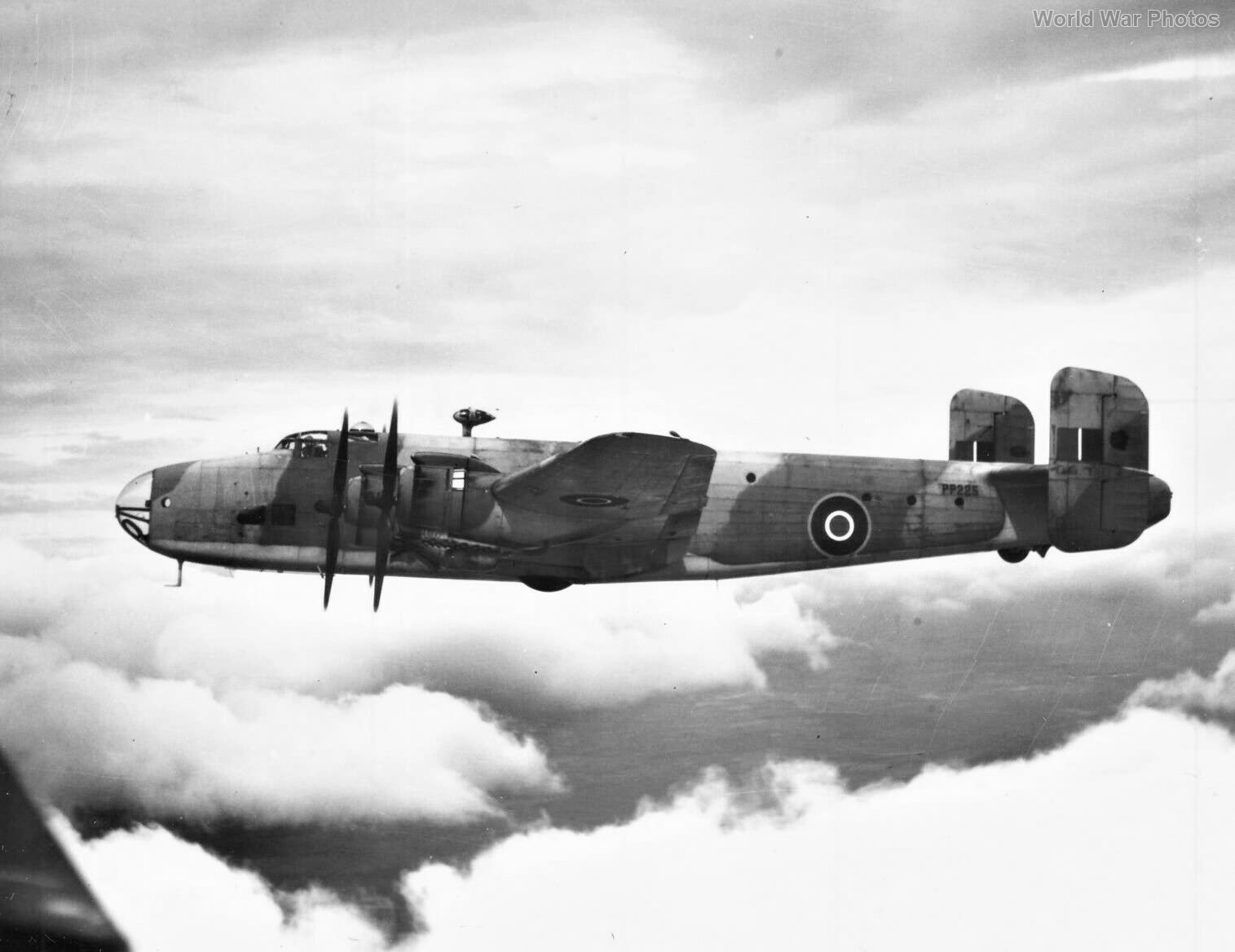Development of the Halifax C.VIII
The Halifax C.VIII was the culmination of a series of modifications and adaptations that transformed the Halifax bomber into a dedicated transport aircraft. This process involved a shift in focus from military requirements to the emerging needs of post-war air transport.
Early Transport Concepts:
- During the war, the need for transporting cargo and personnel led to the exploration of converting bombers into transport aircraft.
- In 1942, Handley Page proposed the concept of a “Freighter-Bomber”, designated HP.60, which envisioned a multi-role aircraft capable of fulfilling both bombing and transport duties.
- This concept, however, was rejected by the Air Ministry, who favored a more straightforward approach of stripping armament and military equipment from existing Halifax bombers to create interim transport variants.
Interim Transport Conversions (Mods 1105 & 1377):
- This led to the creation of the “Transport A” variant, which was essentially a stripped-down Halifax III, VI, or VII bomber.
- Further development resulted in the “Transport B”, which incorporated a ventral pannier with a capacity of 8,000 lb to replace the bomb doors.
- This pannier, designated Mod 1377, was successfully tested on a Halifax III (LV838) at Farnborough in February 1945.
- Many existing bombers were converted to C.III, C.VI, and C.VII configurations by removing armament, the dorsal turret, H2S radar, and other military equipment.
- These converted bombers could carry freight, nine stretchers, or eight passengers.
The C.VIII and the HP.70 (Mod 1192):
- Recognizing the need for a dedicated, high-capacity transport aircraft, the Air Ministry ordered 100 Halifax C.VIIIs.
- Designated HP.70 by Handley Page, this variant incorporated all the features of the “Transport B”, including the 8,000 lb ventral pannier.
- It also featured Mod 1192, which allowed for flexible configuration to carry freight, ten stretchers, or eleven passengers, along with a paratroop cone.
- The C.VIII also included specialized radio and radar equipment (Mod 1401).
- With a crew of five and dual controls for the pilot and navigator, the C.VIII prototype (PP225) first flew in June 1945.
Post-War Service and the Berlin Airlift:
- The C.VIII remained in RAF service until the summer of 1948 before being transferred to the British Civil Register.
- It played a crucial role in the Berlin Airlift, transporting vital supplies to the besieged city.
The development of the Halifax C.VIII highlights the adaptability of wartime bomber designs to meet the evolving demands of peacetime aviation. Through a series of modifications and conversions, the Halifax, initially conceived as a heavy bomber, was successfully transformed into a capable and reliable transport aircraft, contributing significantly to post-war recovery efforts.
